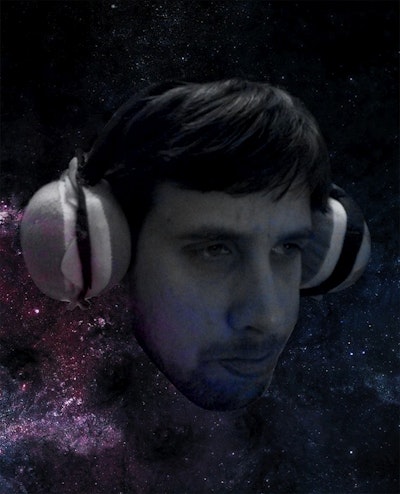OTB Meets ‘The Bill Hicks Story’ Directors..
OnTheBox
Original article here
Isn’t it always the case that the best artists and entertainers both die young and are more appreciated after their deaths?
Nobody embodies this tragic curse more evidently than the late, great, Bill Hicks, whose life was cut short by pancreatic cancer at just 32 and has grown in popularity as his comedy performances have been passed from fan to new fan around the world.
Finally two British television producer/directors, Paul Thomas and Matt Harlock, have brought his rollercoaster life story to the screen with American: The Bill Hicks Story. Much like the comedian himself, the film takes an innovative and radical approach to documentary making, by doing away with the old talking heads, clips and narration style, in favour of a pioneering new photo animation technique overlaid with the voices of ten key interviewees.
“We knew we weren’t going to follow a traditional route of just talking heads and clips, but then once we came back with the story itself, that’s when we realised what the animation technique was going to have to do in terms of storytelling” said Paul Thomas. “Documentaries seem to have been moving to a more narrative form anyway, so we’d seen The Kid Stays in the Picture, which uses a more basic version of the technique, and then there’s Touching the Void, which was effectively a reconstruction drama. In a similar way there’s not scripting in ours, there’s no additional voiceover, it’s just the people who were there, giving their witness accounts”.
The filmmakers worked closely with Bill’s family and friends, amassing over 100 hours of interviews, along with the archive of photo and video material kept by the Hicks family and Bill’s photographer friend; David Johndrow. With this wealth of visual material they decided to push the boundaries of using photos to tell the story.
By cutting the characters out of original photos, filling in the backgrounds, and moving cameras around them in production package, After Effects, they have produced crude but effective reconstructions of pivotal moments in Bill’s life. “I think the first time you really see it in action is when the characters are sneaking out and going down to the comedy club, and for that we went back to his childhood home in Houston to get background photos. So it’s a great way to get people into what the technique can do, because it really takes you back to the time and place and what these kids were going through; it’s very immersive we hope” says Matt Harlock.
These recreations are inter-spliced with previously unseen footage of his early performances, showing his natural talent for comedy from the tender age of 13, when his set consisted of stories of his suburban strict catholic upbringing. The film then charts his burgeoning success, first enlightening mushroom trip, failed move to LA, and then the almost inevitable descent into drink and drugs that seems to blight so many of these stories.
This troubled period and his final months are both covered extensively, but the key theme is the general lack of mainstream acceptance of Bill’s confrontational socio-political style in America. Something compounded by his huge popularity in the UK and Europe; which is partly credited with sobering him up.
So while early screenings in the US have been positive, the filmmakers were apprehensive about the reaction; “obviously it’s a lot easier to sit here over this side of the Atlantic and laugh at what’s wrong with America, but Bill was actually performing to an audience and saying ‘well this is what WE do as Americans’, and we’re sitting there as two little English blokes going ‘I hope they don’t turn on us’. Thankfully they didn’t, and I think that Bill is the kind of person who draws people to him who are interested in openness and debate, so we had a lot of people coming up to us afterwards and saying ‘I’m so glad I’ve found this guy, how did I not know about him, and everyone should see this’”.
This revelatory reaction seems to be synonymous with finding Bill’s work, so the ultimate goal of the documentary is to expose more people to Bill’s comedic genius and revolutionary ideals, and hopefully gain him the mainstream recognition he never quite enjoyed while he was alive.
But while the likes of Doug Stanhope and Dennis Leary have continued Bill’s crusade to some degree (the latter being criticised for copying his work), the filmmakers are hesitant to make comparisons. Matt points out, “people have mentioned that Dennis Leary isn’t in the film, but there’s one line in the film which kind of sums that up, where Dwight says ‘being a great comedian is not about being like Bill Hicks, it’s about your inner voice matching your outer voice’, Paul adds, “there’s a thread through the film about the craft of comedy, and one of the reasons is to inspire the next generation of comedians”.
